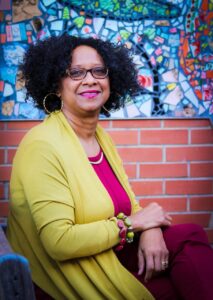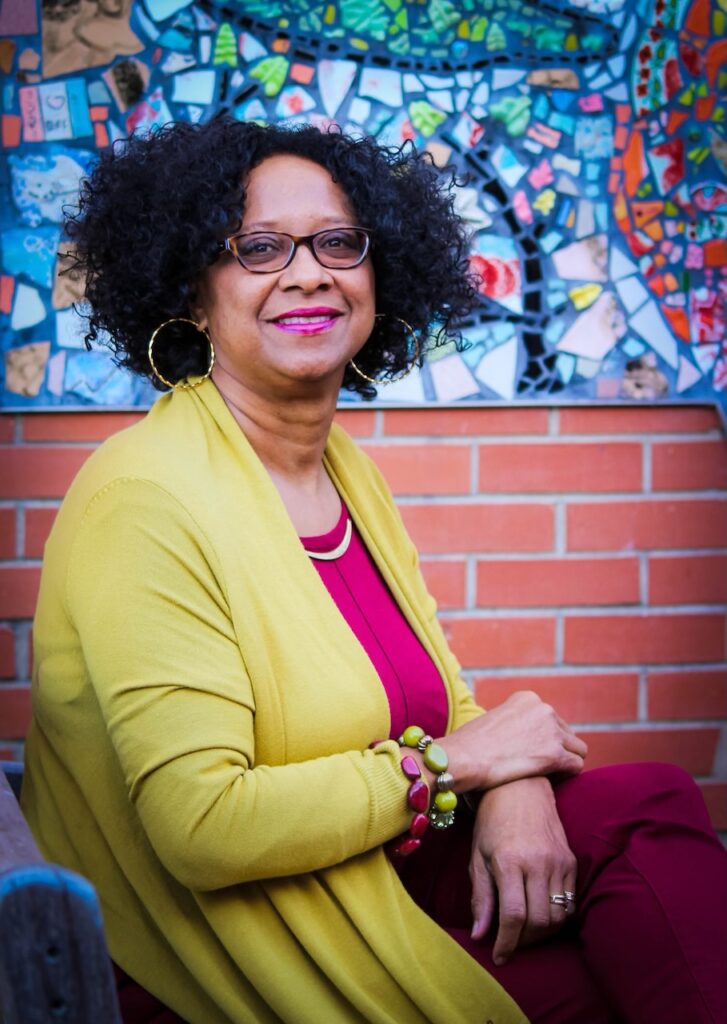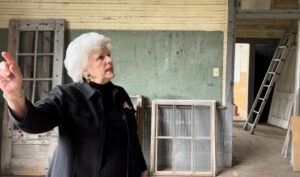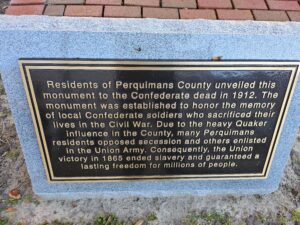 By Amy Beth Wright
By Amy Beth Wright
Reba Green-Holley retired as Gates County’s Extension Director in 2014, but she hasn’t stopped working for a moment since. Extension programs are established by university land grants and bring on-campus research to locals, “improving the quality of life in the community at-large,” says Green- Holley. In North Carolina, North Carolina State and North Carolina A&T are both land grant universities, like “many counties with HBCUs, which were first established as land grants,” she explains.
One of Green-Holley’s major projects in retirement is the preservation and restoration of Gate’s Country’s remaining Rosenwald schools. Reid’s Grove is a two-classroom Rosenwald school owned by Gates County, and the Corapeake Rosenwald school is currently owned by a local church and boarded up. At one time, Gates County had seven Rosenwald schools; one is now a private residence and Green-Holley has seen others demolished, including two instances where new elementary schools are on the same site as a former Rosenwald school, but the original building has been torn down. Green- Holley’s efforts have secured Reid’s Grove’s place on the National Register of Historic Places, and she is currently working to establish a new non-profit as part of Roanoke Economic Development Inc. (dba The Roanoke Center) to help with restoration and management of both remaining schools.
I spoke with Green-Holley about how her commitment to this project originated, grew, and now shapes her retirement to be a pursuit of resources to protect Rosenwald history.
What drew you to working with Gates County initially?
After I finished my Masters, I was working in a lower level administrative clerk position. My boss said, “You need to get out of here and work within your profession. I came across this job while I was in my twenties, enjoying life with my friends. I was always doing something in the community, with the Girl Scouts and acts of community service—I was always involved, and so the job lent itself to me. I wasn’t behind a desk all the time, I was constantly interacting with people.
The Reid’s Grove site is now very important to you. Over time, how many students do you think came through this school?
I met at least 25. A picture of them in front of the school shows about 30 to 35 students.
At this point, what needs to happen to further protect that site?
A big accomplishment was getting the school on the National Register. Now, the county needs to invest money to bring it back to its original footprint on the inside. They’ve completed restoration on the outside and some maintenance. For example, in that school, a wall rose to the ceiling to divide the two classrooms—it’s there, but it’s between sheet rock. That needs to be torn out and redone to bring the site back to its glory. A fluorescent light was put in that needs to come out, and something more
historical needs to be put in place. A few other things are needed to deal with moisture control. We got a comprehensive report from the state preservation office that suggests what can be done to ensure the building is secure and not damaged. The county manager has that and it’s on their radar. But money’s been tight.
What’s been your role in trying to make that happen?
We’ve formed a county-wide committee and, in terms of the Corapeake school, we’ve gotten the church to agree to a long-term lease to allow a new non-profit to manage it. There was a faction that wanted to tear it down, and I kept telling them “No, you don’t want to do that.” Sometimes people don’t see it at first. So, I researched, and now they’re ready. My proposal was, ‘Let’s start a nonprofit and we will manage this.’ Nonprofit oversight will make it easier to find funds. We’re all volunteers of the nonprofit now.
Once our non-profit becomes official, we can apply for grant funds and fundraise. Corapeake needs a major renovation inside and out, including adding a bathroom. The roof had a hole in it, which led to floor damage. Once we renovate, we can use it as a community building for meetings or events, which will create some income for the nonprofit. Was it a challenging process to get Reid’s Grove nationally registered?
Working with the state’s preservation office was helpful, and a historical survey had been done years before—if you’ve done certain things to the structure, sometimes it won’t be possible to have it landmarked. The part that took money was paying a consultant to write the application and conduct research to add historical context. Once it’s completed, it’s sent to the state and national offices. The preservation office had a list of consultants we could choose to work with. I wrote a Community Development Grant for that money and included my 4-H youth into the history part of it, and included money for the signage and the grant application itself.
Later, we had a homecoming and interviewed some of the former students for their stories. We invited the community and commissioners to come for that homecoming program and had displays of pictures of people who’d been in the building and told the history of Rosenwald schools. We made presentations with the commissioners because people didn’t know, and my 4-H youth were again involved in planning the program.
How did you preserve the oral histories?
I have them on a disk and on my computer, and I have a box of nothing but Rosenwald stuff. If we can get the other sites up and running, we want to offer a guided tour to tell the history and have that readily available to share. We’ve asked people, ‘if you have anything from that era, please save it.” It’s been so long, lots of stuff has gotten thrown away.
Why is preserving these schools so important to you personally?
It’s part of American history. Many people see Black history as something separate, but Black history is American history. As a Black person, I’ve always been part of the whole fabric of the community.
Why is this mission essential for Gates County?
A lot of Caucasian history has been saved—the old courthouse and certain homes have been written about, and people know about them. There is nothing exactly the same in the county that says, “This is something that African Americans had.”
It’s important that these two schools be saved to share that we’ve had a part in this community, and to preserve how the community worked together to educate African Americans. During that time, there was no formal education for African Americans before integration. And the community felt it so important to do that. When Booker T. Washington and Julius Rosenwald of Sears Roebuck came together as a team, that was unusual during that time, and it was to solve a need. Grants were available for communities to get these schools— but locally, you had to raise funds to match the grant. The African American community felt education was that important that they sold dinner plates and crafted items free of charge after their regular jobs. Land was donated by people who saw the need for education. Back in that time people didn’t have a lot, but they were able to build these schools so that their children could be educated.
Why is this history so important for us all to know more about, especially right now?
When the Rosenwald schools were built and African Americans were able to get more education, it opened the doors for people to improve their economic status and add to the community. Without it, you wouldn’t have what we have today, with people thriving in their communities. It’s important to preserve that because not only does it show how important education is, it shows something that was not the norm during that period—that people could work together, black and white, to make something happen.






